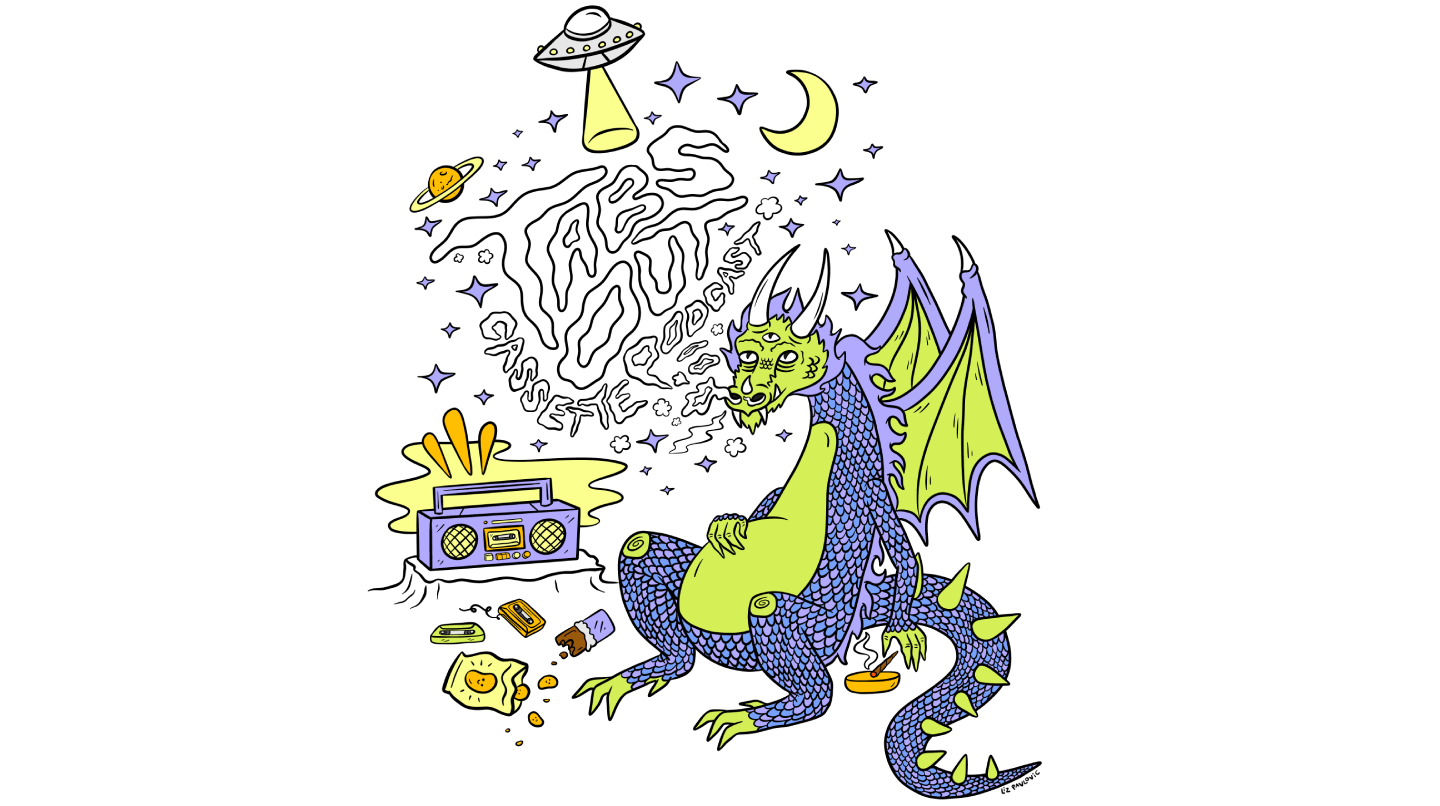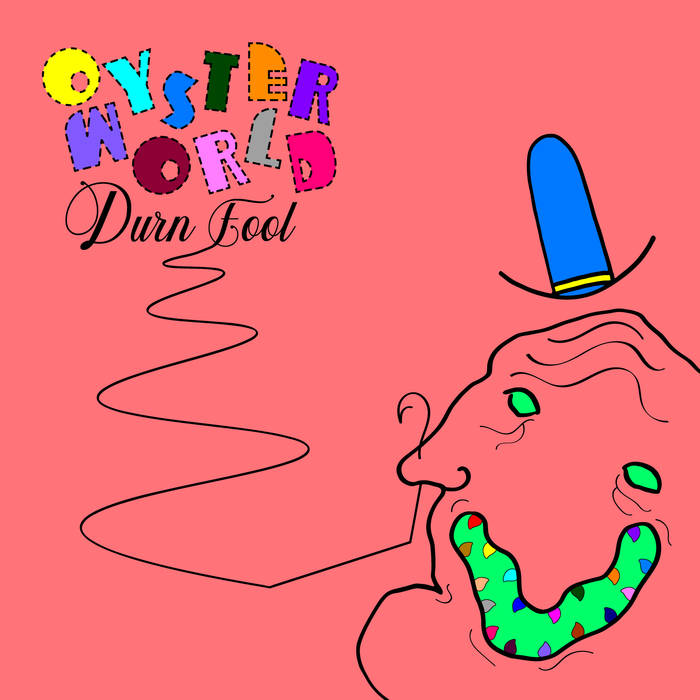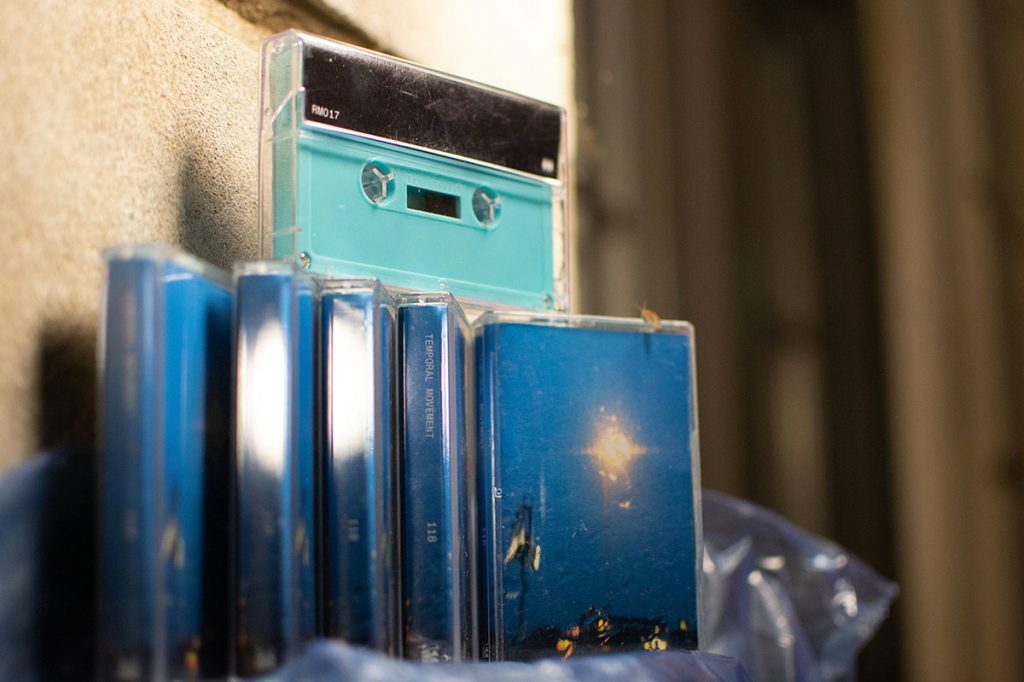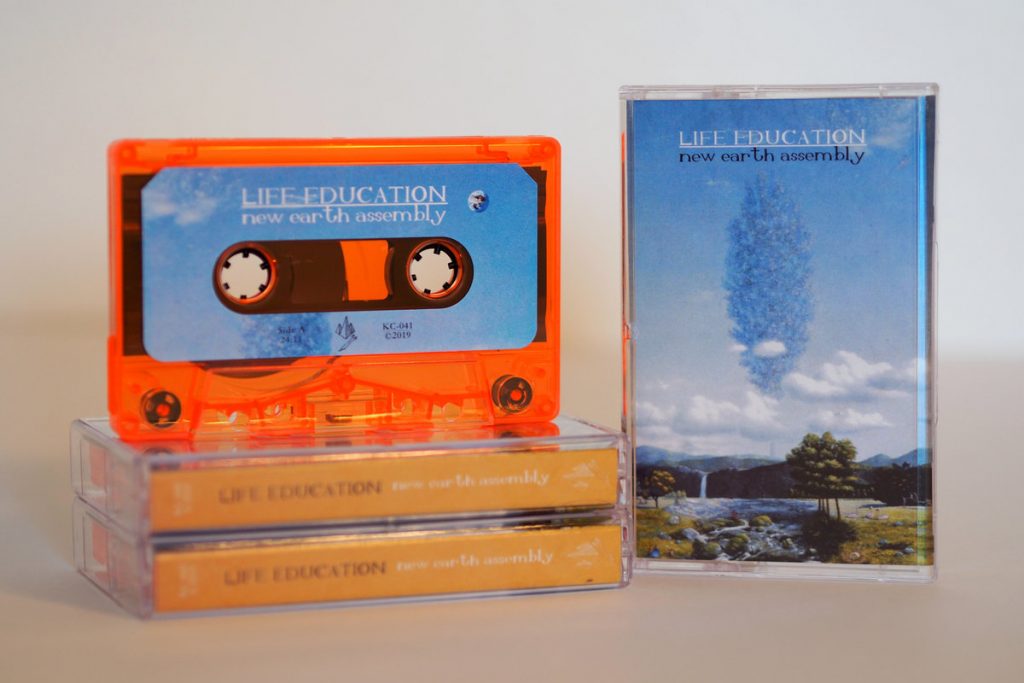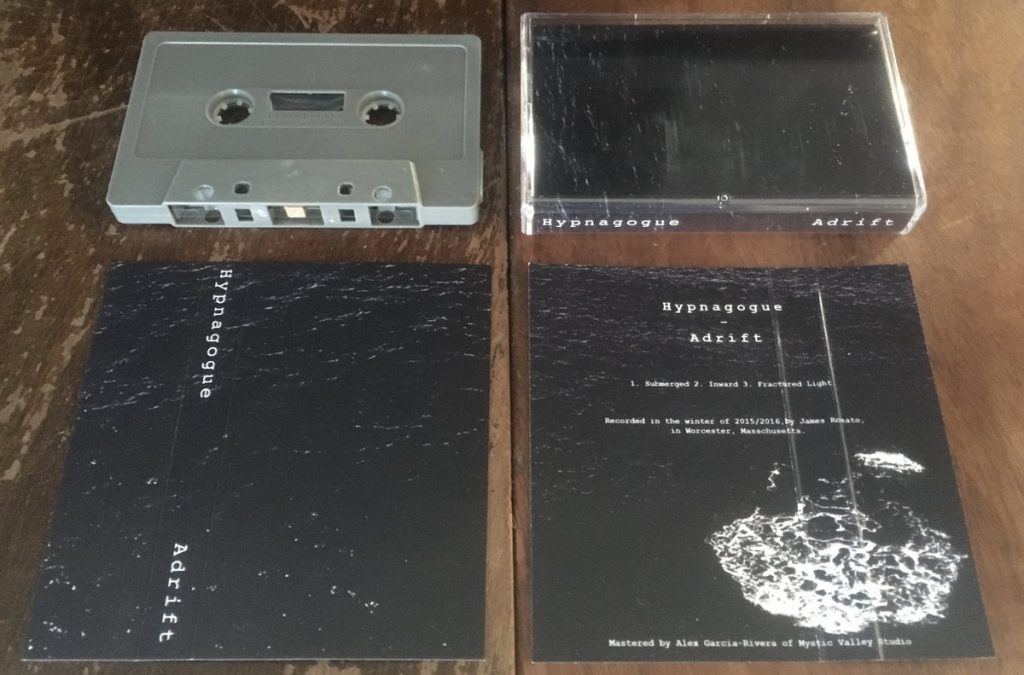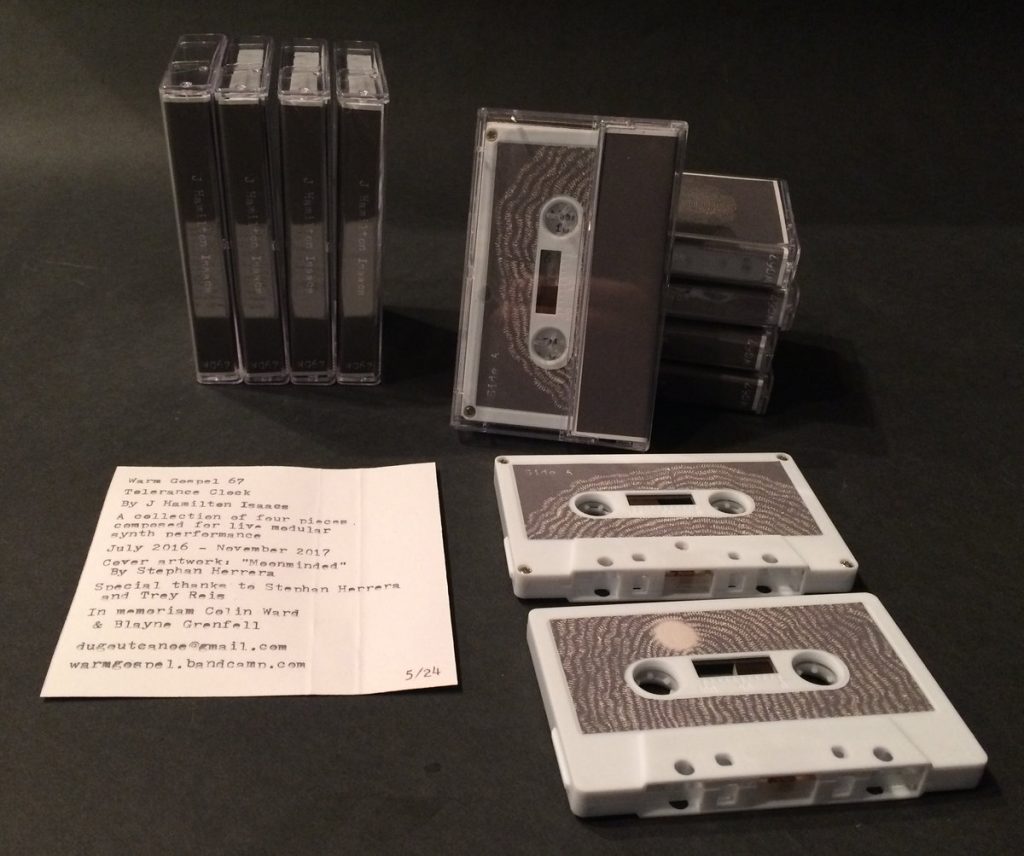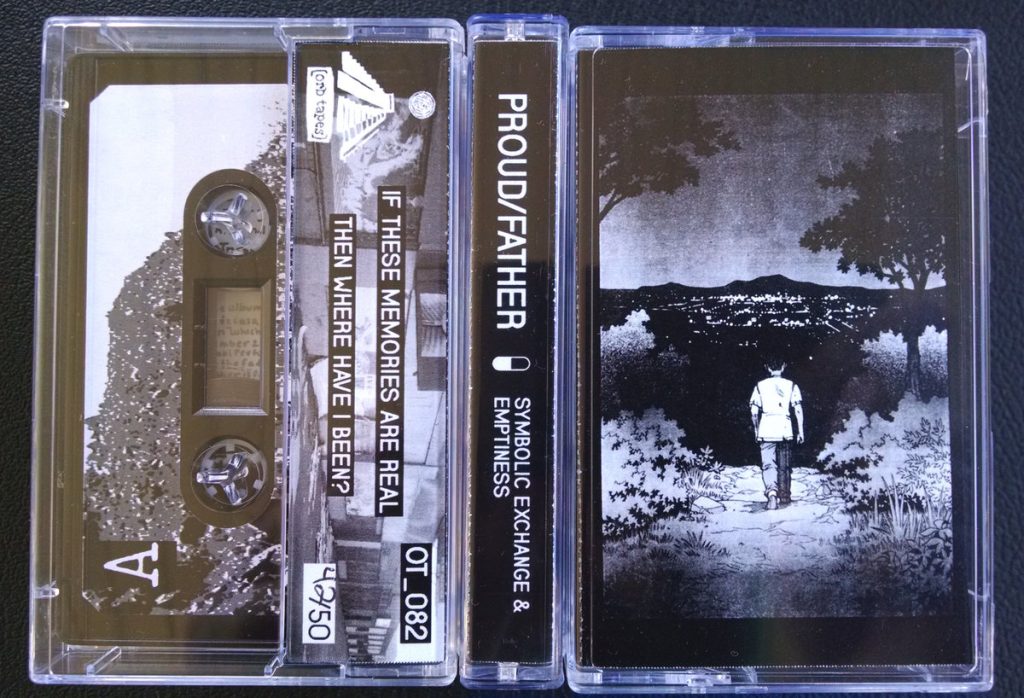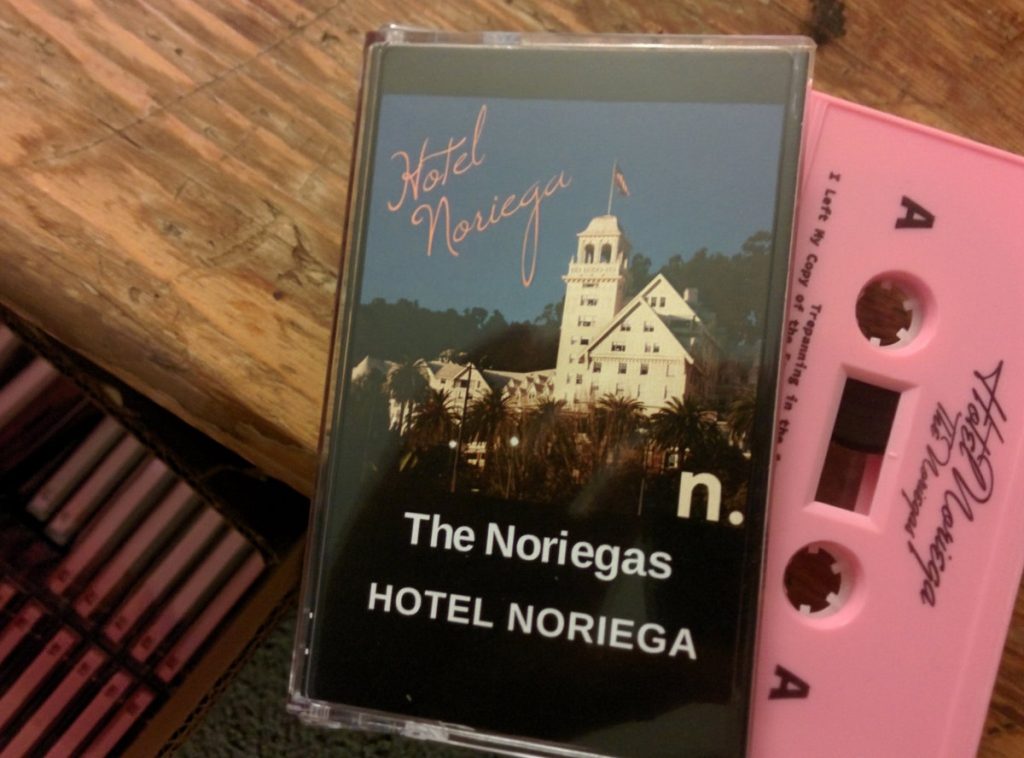4.3.19 by Tony Lien

Michael Potter founded multi-genre experimental tape label Null Zone in 2015. Since then, the label has earned its reputation as one of the mainstays of the cassette scene — thanks to Potter’s ability to surprise fans with each release as well as his willingness to tour and promote the strange music he curates. Due to this openness and hard work, I posit that Null Zone will weather the onslaught of the impending decades and be remembered fondly by our avant-garde obsessed, half-mutated, nutrient-deprived descendants as they drive faithfully towards the gates of Valhalla — shiny and chrome.
And, though it may very well be too early to tell, I also posit that Potter’s new label Garden Portal will be celebrated by future warboys just the same — if not more so.
Yes, Michael Potter has taken it upon himself to start a second label.
The first two releases (both albums courtesy of the same artist, Joseph Allred) were released on March 22, 2019. Read on and you will find out a little about what to expect when listening to Allred’s work, as well as some context regarding the genesis of Garden Portal in the form of an interview with Potter himself.
“Aspirant” revolves around minimalist sound experimentation — laden with field recordings, drones and occasional melodic passages that give the album a ghost town soundtrack sort of vibe. Throughout its run time, I can’t help but imagine a lone spirit wandering from place to place in some abandoned township, tinkering with rusted porch chimes (see the aptly named “Chimes and Basement Mass”) or sitting in a room amongst sofas and chairs covered in dusty plastic playing a forlorn tune on a harmonium (see “The Coyotes, The Sun). There are even moments that lean towards the creepy side (if you go along with the ghost town thing) — such as in “Good Order” when unintelligible whispers swirl around in the air amidst an ominous drone.
When considering all of this, perhaps “Aspirant” is a meditation on how it feels to be alone and lost in a quixotically empty place saturated in memories — and yet still feel an insurmountable desire to somehow make something beautiful out of it.
“Nightsongs” is a logical companion to “Aspirant” in that it possesses similar lonesome qualities — each track being comprised of thoughtful ditties played with subdued passion on six and twelve string guitars in an empty room. Due to this choice of instrumentation, the songs are more grounded and intimate. However, though the album is less “experimental” in this particular way, it nonetheless scribes its own chapter in the shared narrative.
All of that being said, what I love most about both albums is that each of them simultaneously compliments the other while standing firmly on its own. They are deep and rich with complicated nuances, like two beautiful humans who would have been just fine on their own — but nonetheless had the good fortune of becoming lifelong friends. And, because of this union, we are all richer ourselves. Bravo, Mr. Allred.
Null Zone is already an incredibly diverse label (in terms of genre) — so how and why start Garden Portal?
With Garden Portal, I want to focus on a more organic kind of sound. Null Zone is pretty all over the place, but more and more it’s focused on electric and electronic musics. I love all that stuff, but I also have a deep love for acoustic based music too, especially guitar music. So a lot of what Garden Portal releases is going to be guitar oriented, but certainly not all. There will be some like drone and more atmospheric type stuff here too, it will just be of a more organic or earthy nature.
How did you come to work with Joseph Allred? Tell us about why you chose ‘Aspirant’ and ‘Nightsongs’ to carry the burden of establishing first impressions of Garden Portal.
I met Joey at the Three Lobed Records sweet sixteen show in Raleigh in 2016. I was introduced through my friend Shannon Perry of the band Wet Garden who I was at the show with. We talked a bit there and then some more on the internet. Met again at the Thousand Incarnations of the Rose American Primitive guitar festival in April of last year where he played a beautiful set of acoustic guitar pieces. Garden Portal had already been on my mind for a minute, and when I saw him play I knew I wanted to work with him. So a few discussions later and he sends me these 2 albums. It was kind of a no-brainer for me, really. These two tapes sort of give a roundabout sense of everything Garden Portal aims to be about – some nice acoustic guitar music mixed with very organic sounding field recordings and soundscapes.
How will you handle unsolicited submissions? Will your process be different than that of Null Zone?
Well, same with Null Zone, anyone is welcome to send a submission over but who knows if I will have time to listen or not. I’ve got the next 3 Garden Portal tapes slated for the next few months. I tend to plan things out at least a few months in advance and I already have a bunch of folks I’ve asked if they want to do something, and a list of others that will eventually be asked. If someone sends something my way that I really connect with, then I’ll try to make something happen if it’s possible.
Going off of the previous question, what is your ideal release schedule look like?
I’m finally kind of figuring it that all out now. Last year I released 22 tapes on Null Zone, doing all the physical production and shipping myself (in between working a full time job), and that was too much for me. That really wore me out and kind of put me in a bad mood sometimes lol. So I think this year I want to slow things down just a little and then slow them down a whole lot for 2020. I’ve got 12 tapes and 1 vinyl LP slated for Null Zone, and 6 tapes slated for Garden Portal for the entire year, the releases alternating between labels every month. Null Zone tapes come in batches of 2, Garden Portal will come out one at a time (from now on). Maybe next year slow that down to just doing one tape a month alternating between labels.
What’s it like running experimental cassette labels in Athens, Georgia? How does location play a part in your creative choices – if at all?
Athens is a great place to live if you just like to kinda keep your head down and do your own thing. There definitely is a cool scene of weirdos making all shades of experimental music, but it’s more like a community thing rather than a music/recording/nightlife kind of thing. A few folks in town will get some tapes from me, and sometimes the record shops will put a few up on the shelves, but not that many folks seem very interested in it. And that’s fine, I realize this music isn’t for everyone, especially not in a place as over-saturated with music as Athens is. I try to work with as many local experimenters as I can, while also working with folks from around the country and globe. So it’s cool to have this thing where those two scenes kind of meet and overlap. Also, just being in Athens, it’s kind of nice to retain a small bit of anonymity and to just be left alone to do what I want.
What is your highest hope for cassette culture (in general) as we push forward through time?
Oh dang, I don’t know. I haven’t thought about that before, nor is that something I would just think of lol. I like cassettes – like listening to them, like making them, like holding them and looking at them… but you know, everything goes away after a time. The world is in a pretty disastrous place right now and I wonder about how adversely I am affecting things by constantly putting out these little hunks of plastic that will eventually become garbage… Otherwise I think it’s great that we have this little music subculture surrounding this “outdated” form of media that is cheap and easy to produce and release, and that so many folks are on board with keeping it going.
